Following a D-Day memorial ceremony on June 6, French president Emmanuel Macron announced that France would furnish Ukraine with Mirage 2000-5 multi-role jet fighters by the end of the year, and train Ukrainian pilots how to operate them in France. Training of pilots and maintainers on French soil was due to begin within days, he said.
This will almost certainly involve a transfer of munitions—particularly, the MICA air-to-air missile—as the Mirage 2000-5 isn’t compatible with non-French weapons. It is particularly incompatible with the common AIM-120 and Meteor medium-long-range air-to-air missiles.
It’s an overall big deal for Ukraine, given how expensive and complicated jet fighters are. But some question whether the Mirages are sufficiently advantageous given the costs of bringing them into service.
Like the F-16B/Cs that Ukraine is inducting into service, the Mirage 2000 is an agile fourth-generation jet fighter—cutting-edge when it debuted in the 1980s, but lacking in long-range radar and weapons by contemporary standards.
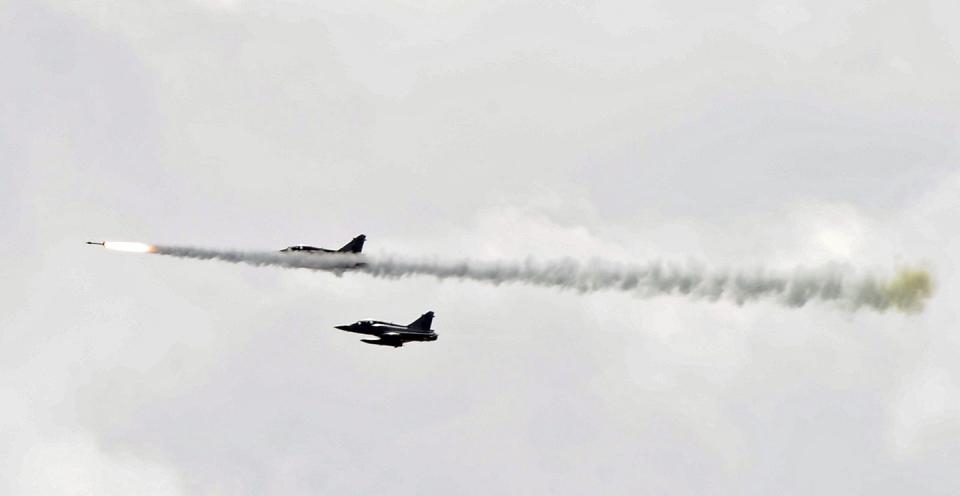
The Mirage 2000-5F jets owned by France are second-generation (early-1990s era) upgrades of original Mirage 2000C single-seat fighters. While the 2000-5F is roughly on par with the old (but modestly upgraded) F-16 jets that Ukraine is receiving, it lacks the latter’s ground attack and AIM-120 air-to-air missile capabilities. That incompatibility, the smaller numbers available, and lack of ongoing production has—at least, until recently—muted Ukrainian interest in adopting Mirage 2000s.
British air power analyst Justin Bronk stated on social media that the “Mirage 2000-5, limited to MICA air-to-air [missile], lacks sufficient range to be effective against Russian fighters/strikers operating behind the very lethal Russian Surface-to-Air-Missile network. Hence, I don’t think it’s currently worth the Ukrainian resources required to get it operational in there.”
However, the Ukrainian Air Force’s need to make back losses—totaling roughly 75 combat aircraft after two years of high-intensity warfare—may have changed minds despite prior lukewarm enthusiasm. Mirage 2000s might also help shoot down Russian cruise missiles and drones assailing Ukrainian cities.
How many Mirage 2000-5s are there to give Ukraine?
Macron declined to specify a “definitive number” of Mirages with which France would furnish Ukraine. He also declined to list “names of the partner countries” involved, arguing that it would be more “effective” to maintain the secrecy of such details. However, the “partner countries” bit strongly implies (without confirming) the involvement of one or more international partners in a Mirage 2000-5 transfer—two particularly likely candidates being Greece and Qatar.
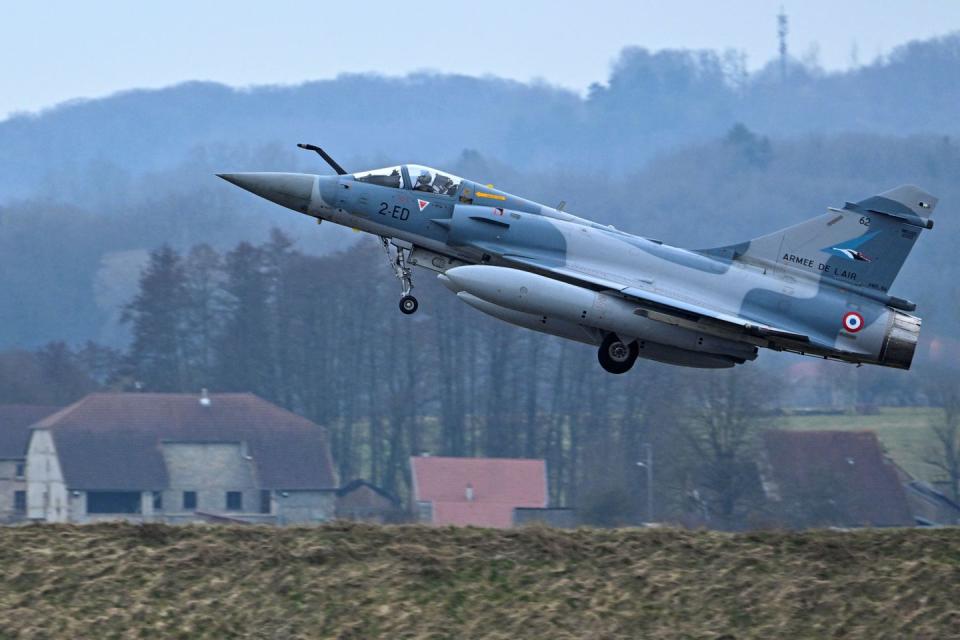

France’s own aerospace force, l’Armée de l’Air et de l’Espace, originally procured 124 Mirage 2000C single-seat fighters. In the 1990s, they upgraded 37 to the improved Mirage-2000-5F model. Of those aircraft, records show that eight were lost in accidents between 1999 and 2022. Today, Flight Global’s World Air Forces 2024 counts 26 Mirage 2000-5Fs still in service, all under the Fighter Squadron 1/2 Cigognes (Stork) at Sauveur Air Base near Luxeuil. (The ‘missing’ 3 may have been cannibalized for spare parts.)
More capable Dassault Rafales will replace the Mirage 2000-5Fs by around 2029, as is suggested by a recent order of 40 more Rafales. So, it seems likely that Macron has decided to speed up the retirement of at least some 2000-5Fs (one retired French officer speculates just 6 to 12) to enable transfer to Ukraine.
While export model Mirage 2000-5s support various precision ground attack weapons, France’s 2000-5Fs are only armed for air-to-air combat, for which they’re uniquely equipped with AIDA optical/infrared sensor pods adapted from the Rafale.
36 two-seat Mirage 2000Ds are instead configured for strike missions—and those are slated to serve in the 2030s. One report suggests, however, that Dassault will have enough time to integrate support for SCALP cruise missiles onto donated Mirages by the time they’re transferred late in 2024.
France’s s single-seat Mirages have been busy, though. On March 9 of this year, two Mirage 2000-5Fs scored the French air force’s first air-to-air kill since World War II—downing two Shahed-136 kamikaze drones launched by Houthi rebels in Yemen at the French air defense frigate Alsace. (Russia has also launched thousands of Shahed-136s at Ukraine.) 1/2 Squadron also maintains at least two Mirage 2000-5Fs on standby to protect Paris, and three in Djibouti to defend the French military base there.
To get more mileage from the “overhead” costs of Ukraine integrating a new aircraft type, France may seek to buy back additional Mirage 2000s from export customers.
Notably, Indonesia abruptly canceled a $790 million purchase of Qatar’s 12 Mirage 2000-5EDA jets in February, which France could try to buy back on Ukraine’s behalf. These jets reportedly integrated air-to-ground weapons, including 50 Black Pearl (a.k.a. Apache) runway cratering cruise missiles closely related to the SCALP cruise missiles France has already given Ukraine.


Meanwhile, Greece’s Hellenic Air Force operates 24 more advanced Mirage 2000-5 Mk2 fighters in its 331st Theseus Squadron at Tanagra Airbase. And its sister unit, 332nd Hawk squadron, recently exchanged its less-upgraded Mirage 2000EGMs and two-seat BGMs for Rafales—Greece has been exploring the possible sale of 18 of those older Mirages to India or Cypress. As Greece has also provided military aid to Ukraine, perhaps Mirages of either subtype could find their way to Ukraine.
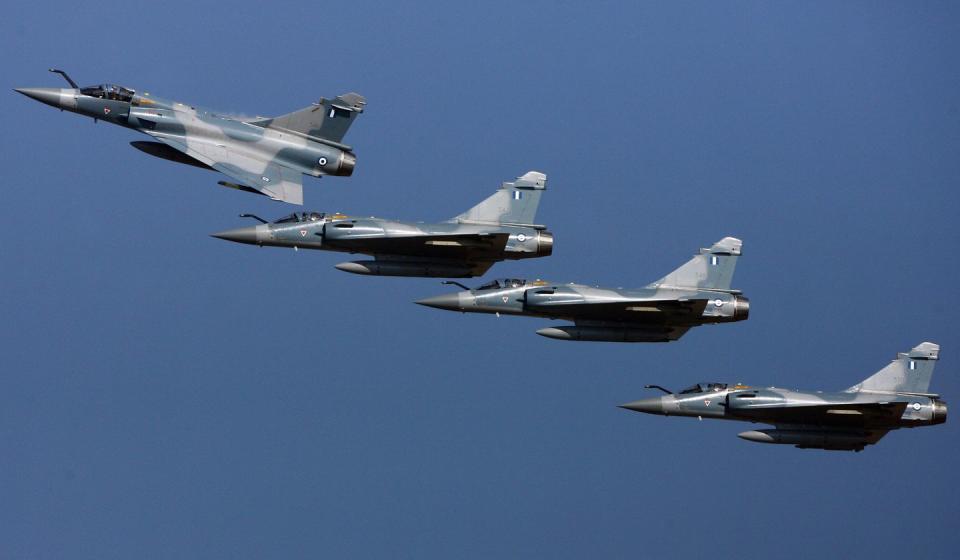

Other export customers include Egypt, India, Peru, Taiwan, and the United Arab Emirates. But these states may be reluctant to anger Russia by authorizing a transfer (at least publicly), and/or face pressing security threats.
Another way to build on Ukraine’s Mirage acquisition is for France to eventually donate two-seat Mirage 2000D strike planes—though those are currently slated to continue service into the 2030s.
Ukraine’s Beyond-Visual Range Challenge
The Mirage 2000 is highly agile, with an impressive instantaneous turn rate, and excels at within-visual range (WVR) dogfighting.
But over the skies of Ukraine, WVR combat is rare, and beyond visual range (BVR) missiles, radars, and electronic self-defense prevail.
Though the Ukrainian Air Force (the PSU) has remarkably survived two years battling Russia’s far more advanced and numerous air arms, it’s 1980s-era Su-27 Flanker and MiG-29 Fulcrum fighters currently have limited ability to inflict losses on Russia’s newer warplanes (Su-30SM and Su-35S Flanker fighters, Su-34 Fullback fighter-bombers, and modernized MiG-31BM Foxhound interceptors) due to the inferior range of their missiles and radars.
That’s a problem, because Russia has increased use of standoff-range UMPK glide bombs released from beyond range of Ukraine’s ground-based air defenses (except for the occasional surprise ambush) since 2023. Despite poor accuracy, their transparent numbers and explosive power are hitting Ukraine’s frontline troops hard. So, the PSU needs air-to-air capabilities that put Russian glide bombers at risk in their ‘safe zone.’
But in air-too-air combat, Russian fighter pilots lean on their technical advantages by engaging Ukrainian aircraft at maximum range with radar-guided fire-and-forget air-to-air missiles—notably, the R-77-1 and the rarer hypersonic R-37M (which, in theory, has a range of up to 250 miles). Such air-to-air missiles with built-in active radar seekers are broadly codenamed ‘Fox 3’ by fighter pilots.
By contrast, Ukraine’s Soviet-vintage MiG-29 and Su-27 jets rely on R-27 semi-active radar-guided missiles for BVR combat, with a max range of 44-62 miles. These are ‘Fox 1’ missiles that require the launching aircraft to keep its nose-mounted radar trained on the target until the missile hits.
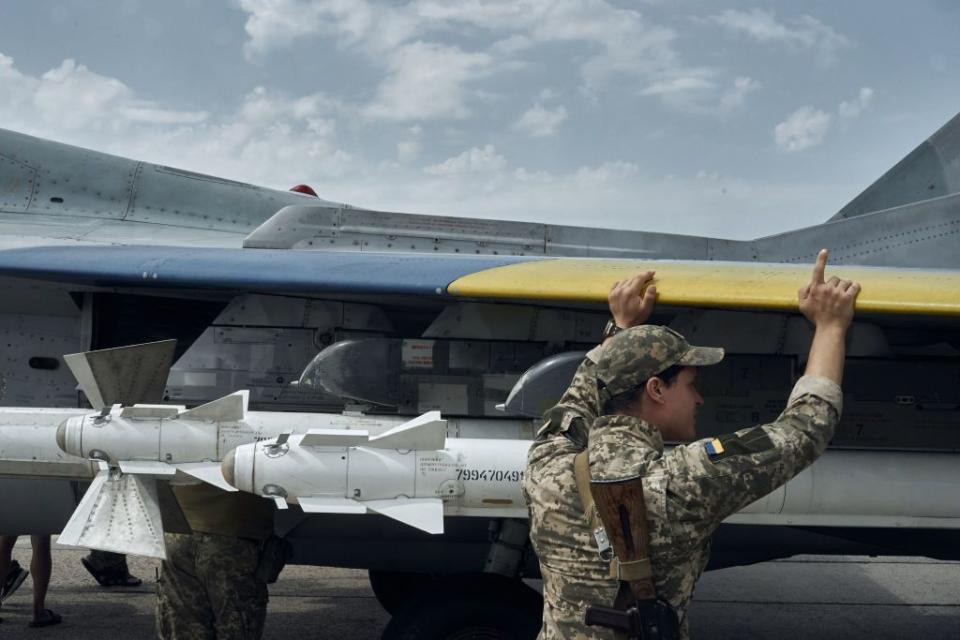

So, Russian pilots can launch an R-77-1 missiles from further away and then race off, knowing that their missile’s built-in seeker may continue homing on target. Meanwhile, opposing Ukrainian pilots must choose between abandoning their attack to evade, or charging after Russian jets in the hopes of sustaining a radar lock despite the Fox 3 heading straight towards them. It’s not much of a choice.
Ukraine thus needs its new Western fighters to level the field in beyond-visual-range combat by introducing both more powerful radar and Fox-3-class missiles that at least match the R-77-1 in range. Those will also enable engaging Russian glide-bombing jets without venturing too far into Russia’s ground-based air defense zone.
The Mirage 2000-5 and its MICA missile partially addresses these challenges.
Can Mirages with MICA missiles defeat Russian air power?
The Mirage 2000-5F is primarily built to employ the medium-range MICA missile, which weighs 247 pounds and included a 26-pound fragmentation warhead. A Mirage can carry up to six, and launch four simultaneously at different targets using its RDY multi-beam radar.
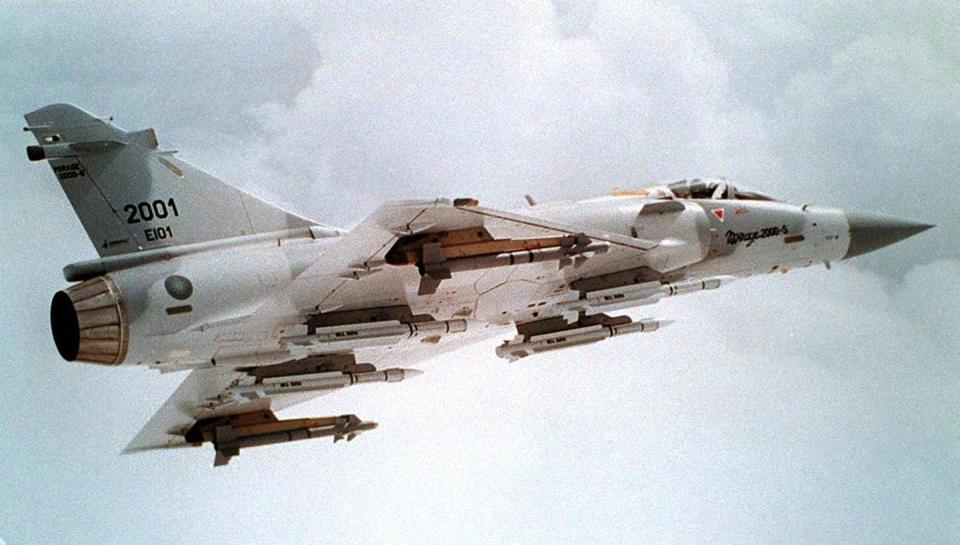

MICAs can attain peak velocities of Mach 4, and use thrust-vectoring motors that can tilt their engine nozzles to execute tight turns equivalent to 50 Gs. The Ukrainian Navy’s future flagship—the Turkish-built corvette Ivan Mazepa,—will also be armed with the surface-MICA-VL variant.
MICA missiles are priced at €1.5 million each, and come in two air-launched variants: one with an active KU-band radar (MICA-RF) and another with an infrared homing seeker (MICA-IR). For long-range warfare (firing modes 1 or 2), these initially soar towards the predicted position of the target using inertial navigation, and possibly receive course updates via datalink from the launching fighter. However, as they close range, they switch to their own onboard seeker to complete the intercept. Thus, MICA-RF is a Fox 3 missile, while MICA-IR is an unusually long-range heat-seeker (Fox 2).
The MICA-IR can also do double-duty as a short-range weapon (thanks to its minimum range of 500 meters), and can engage enemies via a helmet-mounted sight even when the Mirage’s nose isn’t pointing at the target.
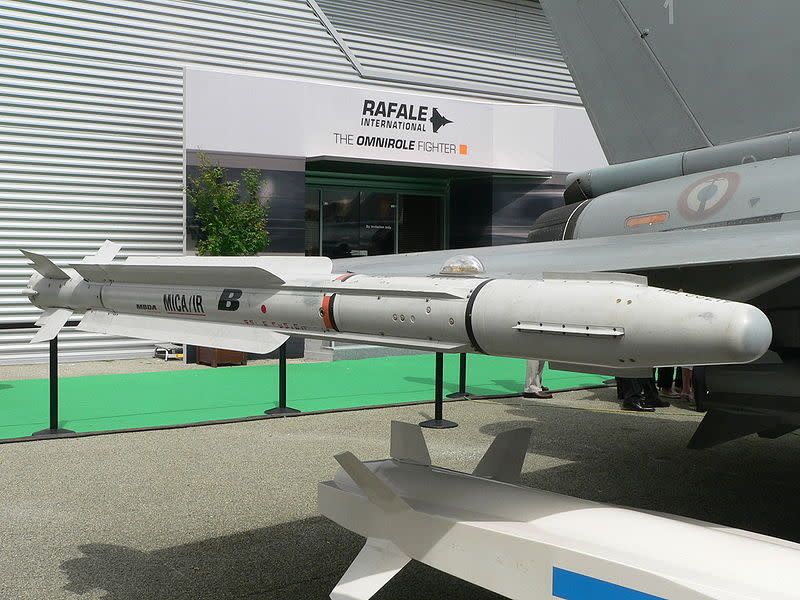

However, MICA-RF’s maximum range of 50 miles still falls short of the Russian R-77-1’s 68 miles. So, while MICA can do fire-and-forget shots, Russian fighters will still be able to shoot first unless taken by surprise in a head-to-head.
Admittedly, the infrared-guided MICA-IR offers a unique option for stealthy attacks out to 37 miles, as IR-guided missiles don’t trigger a targeted aircraft’s Radar Warning Receiver. Though MICA-IR’s seeker is unlikely to acquire its target at maximum range, the missile is capable of lock-on after launch.
A fighter’s on-board radar is as important as its weapons in BVR combat, though both Russia and Ukraine extensively leverage ground-based radars for air combat as well.
The 2000-5F uses the RDY X-Band doppler radar with a mechanically rotating flat-panel antenna that scans a 60-degree arc. It reportedly has a max range of 70-80 miles, though a 1998 report describes a specialized very-long-range mode effective out to 92 miles.
Overall, this performance is better than the radars on Ukraine’s Soviet jets, and possibly even the APG-66(V)2A on Ukraine’s F-16s. However, it falls short of those on modern Russian fighters like the Su-35S’s powerful Irbis-E radar, which has a reported range of 217-250-miles for detecting F-16-like aircraft with a focused scan.
Thus, Ukrainian F-16 or Mirage pilots would have to implement complex tactics leveraging electronic warfare, terrain masking, ground-based radars, and ground-based air defenses to temporarily/locally undermine Russia’s sensor-based advantages.
The Mirage 2000-5F does include a NATO standard Link 16 datalink, which should facilitate teaming up with F-16s, Western ground-based air defenses, and the GlobalEye airborne early warning radar plane Sweden plans to give Ukraine.
Could Ukraine improve its Mirage 2000s?
Notably, manufacturer MBDA will begin delivering new MICA-NG missiles with additional stored propellant made possible by miniaturization of electronics in 2026. That, combined with a new dual pulse motor, doubles MICA-NG’s range to 100 miles. It will come in both active AESA radar- and infrared-imaging seeker variants—both of which represent higher-resolution and countermeasure-resistant improvements over prior MICA seekers.
That implies a major leap in effectiveness, but not for two years. And even then, Ukraine might have to wait in line, given demand from France, Greece, and (possibly) India.
Furthermore, fully leveraging MICA-NG’s 100-mile range would require an upgraded radar that can see further. Greece and the UAE’s Mirages use the newer RDY-2 radar with 15% greater range (allegedly up to 87 miles for fighter-sized targets), synthetic aperture ground scanning, and tracking capabilities. So, that is ‘droppable’ into a Mirage-2000—but again, that’s not on the base model France owns.
Likewise, support for various precision air-to-surface weapons and pods developed for export Mirages could be retrofitted into 2000-5Fs given to Ukraine—but how quickly and cheaply is unclear.
India has modified its Mirage 2000s to use Soviet R-73 short-range air-to-air missiles and American Paveway laser-guided bombs (used successfully in the 1999 Kargil war against Pakistani bunkers). Ukraine has already extensively modified its Soviet jets to use Western weapons, and may modify Mirages it acquires too.
A quick guide to the Mirage 2000 and its many variants
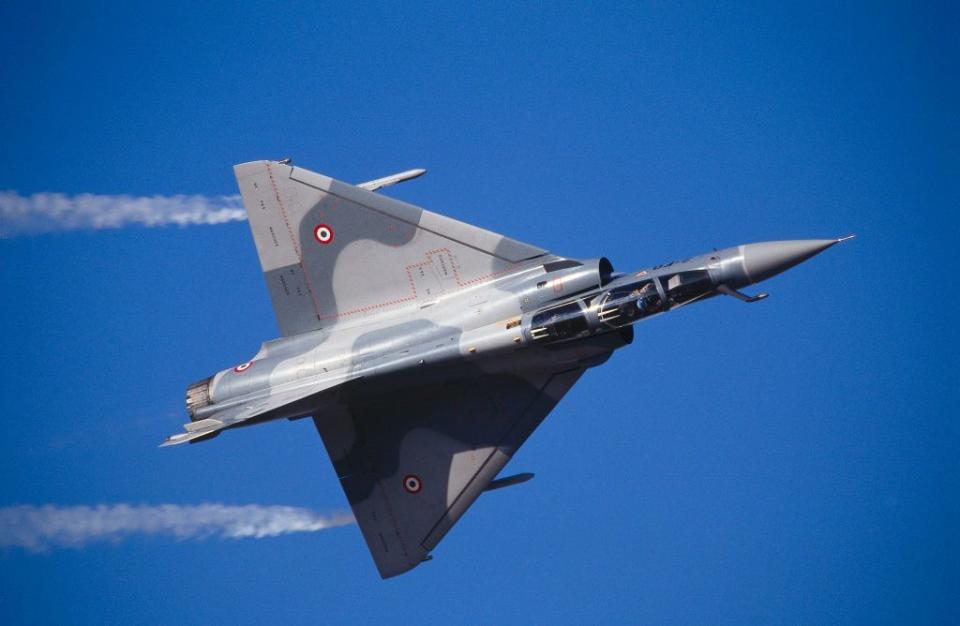

The Mirage 2000 is the ultimate member of an illustrious family of delta-wing supersonic jet fighters by Dassault Aviation. The line began with the Mirage III, which first flew in 1956 and saw intense use in Cold War air battles.
The 2000 originated from a ‘Delta 1000’ project that began in 1972 as an affordable and more versatile complement to an ambitious twin-engine G8 with swing wings. The pricy G8 got axed in 1975, leaving the Mirage 2000 to enter French Air Force service in 1983. Factories at Argenteuil, Martignas and Bordeaux would ultimately build 601 single- and two-seat Mirage 2000s, just over half (310) of which were for the French military and the remainder of which were for export customers.
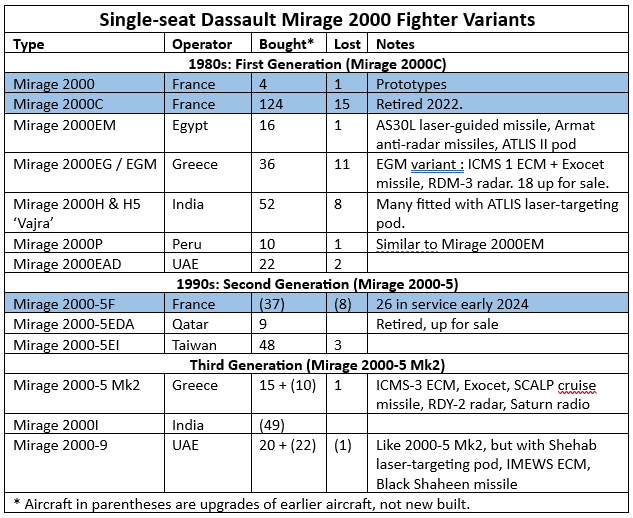

Roughly one-sixth (97 or 98) have been lost over four decades of operational service—all accidents, save for one Mirage 2000N, which was downed by a Serbian Igla man-portable missile.
The Mirage 2000 evolved similarly to the contemporary American F-16 fighter—both were short-range, air-refueling capable and versatile single-engine tactical fighters leveraging then-new, fly-by-wire controls to compensate for an aerodynamically unstable but highly maneuverable airframe. Both also combined low weight with a single powerful turbofan engine to achieve high speeds or lug heavy payloads.
Specifically, the 8.25-ton Mirage 2000C could accelerate up to Mach 2.2 at high altitude, and carry nearly 7 tons of external stores. But unlike F-16s, France’s single-seat Mirage 2000Cs were delivered without support for precision-guided ground-attack weapons. Those were reserved for two-seat Mirage 2000D and 2000N strike variants. There were also Mirage 2000B two-seat trainers.
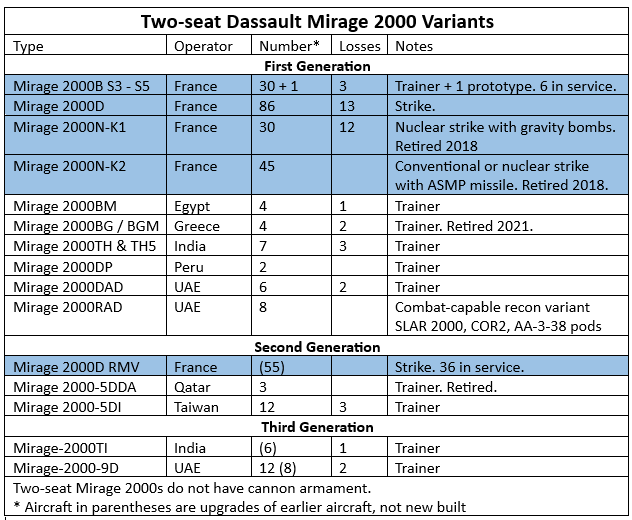

The 2000C’s avionics included the Thomson RDI or RDM doppler radar (with ‘look-down, shoot-down’ capability) and a self-defense suite including a SABRE jamming system and SERVAL radar warning receiver. For weapons, there was the powerful built-in DEFA-554 30-millimeter twin revolver cannon, the Magic 550 short-range air-to-air missile, and the Super 530L medium-range missile.
In the 1990s, France modernized 37 of its Mirage 2000Cs to the 2000-5F model supporting larger external fuel tanks and then-new MICA missiles. Revamped avionics include a new glass cockpit, combined throttle/stick controls (HOTAS), improved self-defenses systems, more powerful computer processors, and much improved RDY radar. Qatar and Taiwan also procured this second-generation variant.
Finally, in the early 2000s, a third-generation Mirage 2000 variant called the 2000-5 Mk2—or 2000-9—hit the market boasting a modern navigation system, newer ICMS-3 integrated digital electronic warfare system (including new geolocation and ELINT capabilities), and an uprated RDY-2 radar with a stealth mode and greatly improved range of ground scanning capability. New and refurbished 2000-5 Mk2s were sold to Greece, India (compatible with Israeli weapons), and the UAE, but none entered French service.
Operationally, Mirage 2000s flew combat air patrols in several armed conflicts that flared on the Iran-Pakistan and Peru-Ecuador borders, but the type’s only aerial kill to date came in 1996 during an ordinarily non-lethal face-off between Turkish and Greek fighters. A Greek Mirage pilot accidentally launched a Matra missile that downed a Turkish F-16D over the Aegean Sea.
Mirages have seen more combat use in the ground attack role, particularly over the former Yugoslavia, Afghanistan, the India-Pakistan border, the Middle East, and northwestern Africa (especially Chad, Libya, and Mali). French Mirage 2000s also famously flew to the rescue of a beleaguered U.S. special forces team in Niger in 2017.
You Might Also Like
Source Agencies



